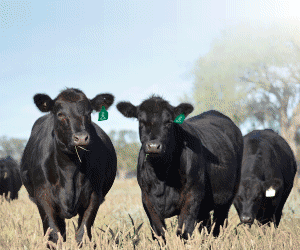Recording Management Groups
Recording management group information is one of the most important aspects of collecting performance information for the TransTasman Angus Cattle Evaluation (TACE).
Why are management groups important?
TACE analyses cattle in contemporary groups to take out the influence of as many of the nongenetic effects as possible (e.g. management, nutrition, feed, year, season, injury, health status). The underlying principle is that only animals that have had an equal opportunity to perform are directly compared together within each contemporary group.
If the contemporary groups are not correctly formed, the EBVs calculated will be less accurate and possibly misleading.
Most of the problems that breeders encounter in “believing” their TACE EBVs can be traced back to incorrect contemporary grouping – either calves being fragmented into isolated groups of only one or two animals (and thereby virtually eliminating those calves from any comparison with their peers) or by not differentiating between calves who performance has been influenced by different non-genetic factors (e.g. differences in management or feeding).
Importantly, the management groups that are submitted with each set of performance information have a major influence on which animals are directly compared within each contemporary group in the TACE analysis.
Types of management groups
There are two different types of management groups.
1. Birth Management Group: specified to describe any non-genetic factors prior to calving that may result in differences to the performance measurements that are collected at birth (i.e. calving ease, birth weight, gestation length).
For example, where one group of cows have been supplementary fed during gestation, resulting in heavier calf birth weights than would otherwise be the case if they ware managed in a similar manner to other cows who haven’t been supplementary fed.
2. Post Birth Management Group: specified to describe any non-genetic factors post birth that may result in differences to the performance measurements that are collected.
For example, when some animals were run on an oats crop, resulting in heavier weights than would have been the case if they were managed in a similar manner to other animals that were run on native pasture.
Specifying management group information is an important consideration when submitting any performance information to TACE. By assigning animals into management groups, seedstock breeders are acting as “eyes” for the TACE evaluation and ensuring that only the performance for animals that have had the same opportunity to perform is directly compared together.
Assigning management groups
Animals should be assigned into different management groups in any situation where their performance has been affected by different non-genetic influences to other animals. In practical terms, animals that have been run in the same contemporary group and have had equal opportunity to perform should be grouped together.
Some examples of where animals should be recorded in separate management groups are:
- grain fed animals versus paddock reared animals
- some animals are fed for show or sale
- some animals being given growth promotants
- animals reared in different paddocks in which feed is of different nutritional value
- sickness gives some calves a permanent set back
- a bull has been fighting and clearly lost weight prior to recording
- yearling bulls used as sires compared to those not used as sires
- different stages of pregnancy for heifers (try to weigh before joining and certainly before two months)
- calves weighed on different scales
- calves weighed straight from the paddock as compared to those off feed for say three hours or more
- calves that are orphaned
Click here to print
Angus Australia acknowledges the funds provided by the Australian Government through the Meat & Livestock Australia Donor Company (MDC).
This resource was created as a result of a collaboration between Angus Australia and Meat & Livestock Australia Donor Company (MDC) (Project P.PSH.1063).






